How and Where to Store Vegetables in Kitchen?
The places where I store my food in the kitchen are the constant, silent reminders of my next bout of shopping. So, before making my grocery list, I take a tour of all the places where I store my fruits, veggies, and other things to ensure that I don’t miss anything important. Forgetfulness at times like these is inexcusable, as lockdown shopping ordeals and enduring long lines are torturous. However, shopping is one thing, and wisely storing and using all that is bought is another – both are crucial at times like these. So here I will be talking about the proper ways and places to store vegetables to avoid wastage and save you from shopping frequently.
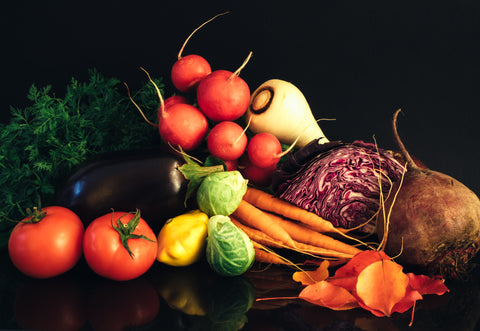
photo by Sharon Pittaway/ unsplash
Choosing the right storage place and storage methods, good aeration, temperature, and ethylene emitting, and absorbing nature of the produce stored adjacently, are the key factors of the prolonged shelf life of fruits and vegetables. While some are best stored at room temperature, others last longer in the refrigerator’s-controlled environment. In addition, ethylene gas emission from some fruits promotes quick ripening and decay of some ethylene-absorbing produce.
Different Ways You Can Store Fruits and Vegetables in The Kitchen
How many storage ways or areas do you have in your home kitchen? All those in your mind are correct, and you can add at least one more to the list. Here’s where and how you can store fruits and vegetables in the kitchen.
- In the Refrigerator: Do you remember the items stored in the fridge at that grocery store or supermarket? Yes! They kept the produce that way to extend its shelf life. And you can do the same at your home. Ready-to-eat foods like butter, cheese, and cooked meat to raw fish, meat, and other items that need cooking should go in the fridge. You will find the expiry date on most things, so make sure not to store more than you will be using during the period.
- Out of the Fridge: The ground rule is to keep smelly items away from the fridge like smoked fish, strong cheeses, and raw onion. Bread can go dry in the refrigerator, for which you can use a bag or bin instead. What’s important to note here is not storing smelly foods next to dairy products, especially cream (or creamy pudding).
- In the Freezer: Do you throw leftovers after cooking a dish? Next time, think again before throwing them as you can use some (or all) of them later. A better option is to freeze leftovers, which you need to do within two hours of cutting or slicing. However, don’t be tempted by the idea and store things for long; you will only end up with more waste. You can check on the labels before shopping to know what items you can keep in the freezer and for how long.
- In a Dark Place: Heat, air, and light can spoil oils through oxidization. Vegetables capable of sprouting like potatoes, garlic, and onions should go in dark and dry places to prevent sprouting. Using separate brown paper bags for such products is recommended.
- Racks and Bowls: Inside or outside, you need to keep ethylene-emitting produce away from those prone to decay by ripening. You can use separate containers, bowls, or racks to store different items. Fruit bowls also add a beauty segment to the dining tables, and racks do the same in the kitchen premises.
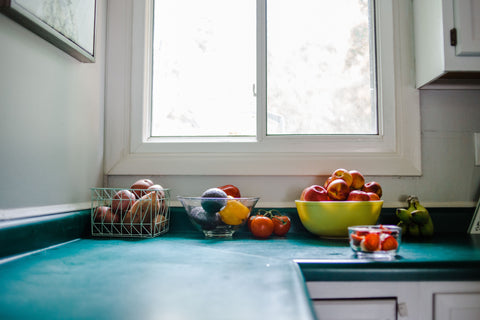
photo by hannah grace/unsplash
Keep Onions Separate, Cool, and Dry
I always store the allium family in a dry container without a lid. Wait! What’s in the allium family? Onions and garlic are a part of the allium family. These vegetables love low humidity, cool, and dark places with decent air circulation. Since moisture can spoil them, here’s how you can keep them fresh and usable for long:
- Start with choosing the right onions. Pick firm ones with dry skin and unblemished bulbs.
- Avoid using airtight containers and plastic bags. Instead, use open containers to store onions in dark, cool, and dry places.
- Store onions separately from other vegetables and fruits, especially potatoes.
- For cut and leftover onions, store them in the refrigerator in a plastic wrap or a storage container.
Even if the alliums start growing green shoots, you shouldn’t worry as they are safe to eat. If you are not comfortable eating the sprouts, you can cut them out and use the rest of the onion.
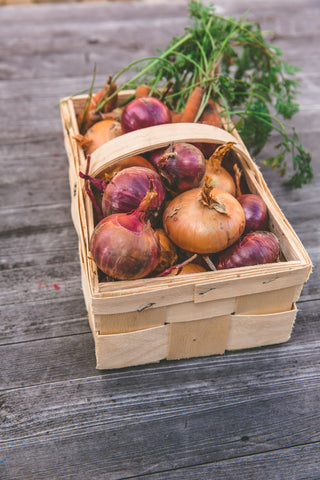
photo by Markus Spiske/pexels
Onion Strings – Do you know the older generations used a special technique to store onions fresh for a long duration? The method is named “Onion Stringing.” You can use it to store a week’s supply. Here’s how to create strings the right way.
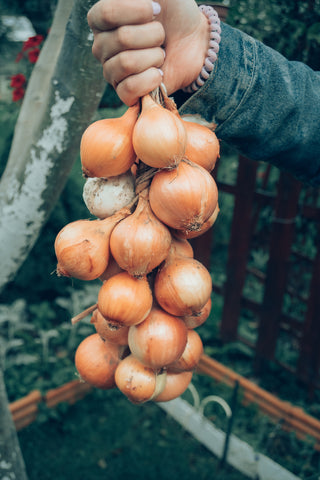
photo by Samur Isma/Unsplash
- Take dry onions with pliable stems, trim roots, and remove the loose outer skin. You can also cut the stem to around 4 inches.
- Take a string of about 5 feet in length. You can increase/decrease the length depending on how many onions you use per week.
- Fold the string at its center and fasten the loose ends together. Hanging the thread on a hook or something else makes things easier.
- Create a loop at the fastened end by twisting the thread.
- Put the onion’s neck in the loop and tighten it. You can shorten the onion’s stem to an inch in length.
- Take the second onion, weave its stem around the string, and twist a bit to lock it in the chain.
- Put the third onion on the string’s opposite side and continue putting onions one by one on alternate sides. This will maintain the string’s balance while keeping onions locked.
- After the last one, you can create a knot on the cord’s top if there’s any left.
- To use the onion, all you need is to pull the topmost onion out, and it will escape without disturbing the rest of the chain.
This technique keeps onions fresher through better air circulation and is aesthetically pleasing as well.
How to Store Other Vegetables for Maximum Use and Least Wastage?
When do you plan how and where to store your vegetables at home? I strategize this before or during grocery shopping. Yes, buying the right product is as crucial as keeping it the right way. Buying the freshest vegetables ensures the longest storage life for them in your kitchen.
For instance, go for richly colored ones over yellowing leaves for leafy vegetables. For onions, squashes, and cabbages, choose those without soft spots or blemishes and heavy ones.
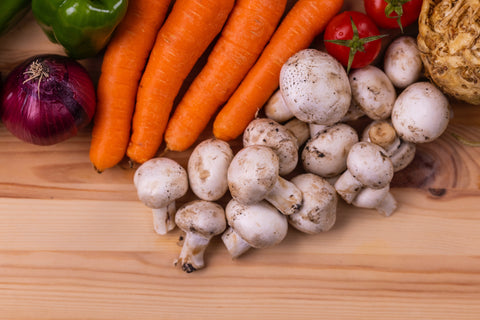
photo by engin akyurt/unsplash
Potatoes: Before jumping to the storing guide, let’s understand that potatoes are ethylene sensitive. That’s why they should always be kept away from ethylene emitters like bananas and onions.
When stored in a dark and cool place, the starchy and waxy potatoes can last for weeks. You can put them in a cellar or air-conditioned pantry but make sure they aren’t stored close to heat-generating appliances. Alternatively, you can use ventilated bins or baskets to keep them. A sturdy cardboard box with holes on its sides is also a good option. The basic idea is to allow proper air circulation and no light inside.
If potatoes are turning green, it means that they are exposed to sunlight. While potatoes with sprouts are still safe to eat, green skin indicates toxicity. The same goes for sweet potatoes, as refrigerating them will cause hardness at the center, causing cooking difficulties. Even sweet potatoes with sprouts are good to eat, but you will need to throw them away if they are rotten, moldy, or shriveled.
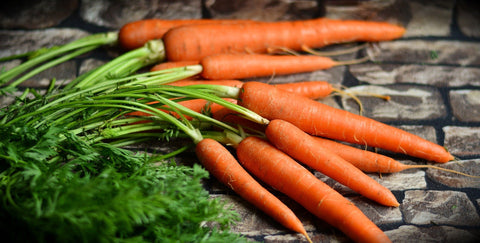
photo by congerdesign/pixabay
Roots and Tubers: This category includes storage superstars like ginger, carrots, turnips, beets, parsnips, and rutabagas. They don’t create a fuss, don’t release ethylene, and have a longer shelf life. Thus, tossing them with leafy greens won’t cause a problem. However, when buying turnips, beets, or carrots with their green tops, make sure to remove their tops before storing them.
Radishes from the root family have a shelf life of up to three weeks in the fridge. And when you store them in airtight containers with their green part attached, you can further extend their lifespan.
Why is removing greens essential before storing root vegetables? That’s because the shoots can suck out the moisture out of the vegetable, shortening its shelf life. However, you can leave the tops intact if you store them separately in airtight containers or zip-top bags, reducing your wastage. For instance, turnip and beet greens add to the deliciousness of stir-fries and soups.
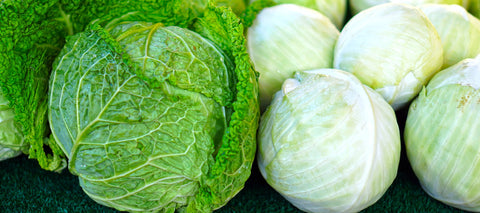
photo by matthiasboeckel/pixbay
The Cabbage Cousins: Versatility, hardness, and humbleness are what make cabbage and its cousins (cauliflower and broccoli) great. They add shimmer to your stir-fries, salads, slaws, soups, and braises. A whole cabbage head will keep good for something like forever in your refrigerator.
Don’t have that much space to keep a complete cabbage head? Cut them into quarters and store them in zip-top bags, and they will still last for a very long period. However, you may find edges oxidizing after one or two weeks. But that’s not an issue. You can cut out the oxidized part, and the leftover cabbage is still as good as new.
For cauliflower and broccoli, the crowns stored in containers with lids or plastic bags stay fresh for a couple of weeks.
Winter Squashes: Room temperature won’t hurt a winter squash; instead, it would be better for those thick-skin gourds. Thus, you can save your refrigerator space for other vegetables. Cool, dry, and dark corners are best suited to store Japanese squash, acorn, and butternut.
Wondering how long a winter squash can last? Cheese pumpkins have a shelf life extending to several months. I have stored them for the longest of six months. However, there may be times when you won’t be using the entire squash in your recipe. You can still refrigerate the leftover part for good use later. Take a plastic bag or sealed container to store the peeled and cut squashes until you use them again.
Leafy Greens: How many leafy greens can you think of right now? Escarole, lettuce, and celery are a few I can think of.
You might know that moisture tends to speed up the rotting of leafy vegetables, particularly when stored in a refrigerator. Thus, unwashed greens stay fresh longer. However, there might be times when you want to wash them before storing them. In that case, you can use butcher paper, paper towel, or clean towel to wrap them for absorbing the extra moisture. But that still won’t give your greenies the extended shelf life as it could cause over-drying, leading to wilting. The best way to store them is by discarding all the slimy and brown leaves and using airtight or zip-top bags.
Celery belongs to a different class. Store it in a zip-top bag, and it will stay crisp for up to two weeks. Another way to store celery stalks is by cutting them into sticks, submerging them in water, and using sealed containers for storage.
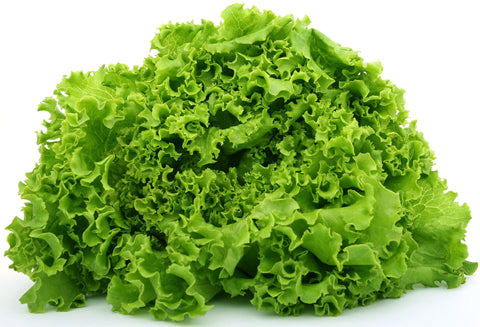
photo by Shutterbug/ pixabay
Lettuce Needs Special Attention
Although humidity is good for lettuce like many other vegetables, that’s not the only thing that keeps it fresh. Lettuce greens also need air circulation. Thus, crisper drawers and plastic bags might be okay but not the best place to store them. Instead, you can extend its shelf life by creating a moist environment featuring proper air circulation.
Do you know how restaurants store lettuce? They wash the lettuce greens, spin dry, and then use a perforated container to store them in the fridge. You can copy them to keep your leafy greens fresh and crispy.
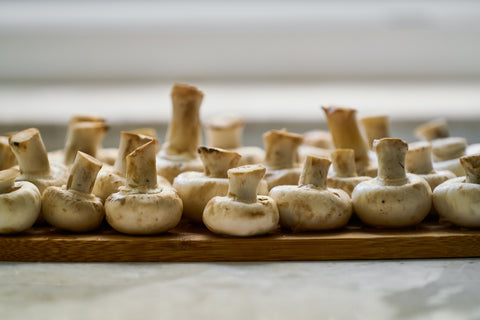
photo by engin akyurt/unsplash
Another Special Case – Mushrooms
How are you storing mushrooms in your kitchen?
The best approach for me has been ditching the plastic containers and using paper bags instead. There’s sound logic behind this. Mushrooms are rich in water content that gets evaporated during the storage period. If you keep the edible fungus in a plastic bag, you will be pushing them to go slimy as the plastic traps the released water. On the other hand, a paper bag allows mushrooms to breathe by not holding the evaporated water inside.
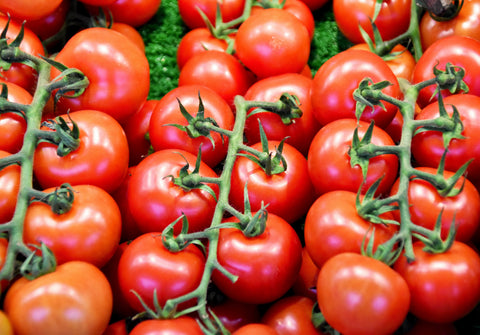
photo by Waldemar Brandt/unsplash
Storing Tomatoes – Fruits Used as Vegetables
You read that right. Technically, tomatoes (along with corn, eggplant, cucumbers, peppers, and zucchini) belong to the category of fruits. But the way we prepare and serve them makes them look more like vegetables.
The best way to store them is by keeping them away from direct sunlight on your kitchen countertop. The room temperature will ensure even ripening of tomatoes, and after this, you can store them in the refrigerator.
Do you put them directly in your fridge? You might have experienced a grainy texture, and they might lose some taste as well.
It is better to leave the tomatoes over the counter. However, you can store them inside the fridge if you don’t mind the change in texture and taste and want your tomatoes to last longer. Use them within two weeks, though.
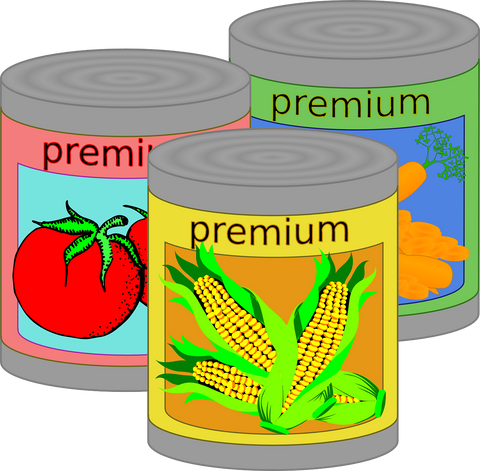
Photo by OpenClipart-Vectors/pixabay
How to Store Canned Vegetables?
If you are buying canned vegetables often, you might have already observed “use by date” and “storage” guidelines on them. Follow those instructions impeccably, and you can keep them for an extended period.
Usually, canned vegetables stay in good shape for a year or two. Here, labeling the containers with dates will allow you to keep track and use cans accordingly. However, you can still consume those canned goods after the mentioned due dates if the cans are properly stored and not damaged.
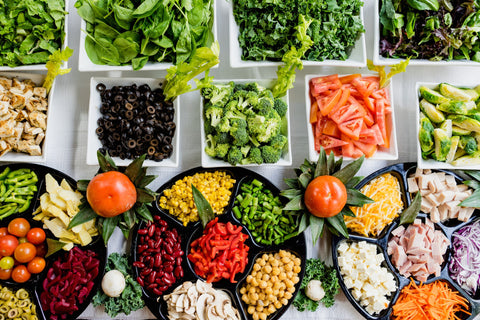
Photo by markxpcourse/pixabay
Chopped More than Required? Freeze and Don’t Throw
Imagine you just finished cutting vegetables and now need to leave the house for something urgent. You have two options here – throw away the sliced veggies or store them for later use.
Freezing is an easy and quick solution at times like these. It also preserves nutrients and keeps the taste unchanged. However, you might need to blanch most vegetables before freezing them. For this, boil cut-up or whole pieces for up to two minutes and immediately cool them in ice-cold water. This way, your blanched vegetables will last for a year. But keep in mind that you can’t use this method to freeze potatoes, eggplant, artichokes, lettuce greens, sprouts, sweet potatoes, and radishes.

